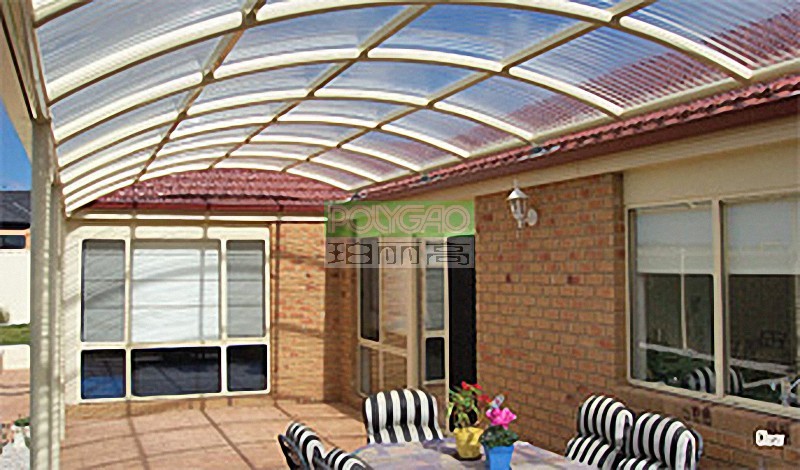-
Phone +86 13928238273
-
gigi@polygao.com

Polycarbonate sheets have become a popular material in a wide range of applications, from greenhouses and roofing to signage and safety barriers. Among the variety of polycarbonate sheets available, two common options are single-wall and multi wall polycarbonate sheets. These materials differ in terms of structure, performance, and ideal use cases.
This article briefly explains the key differences between single-wall and multi-layer polycarbonate panels to help you make an informed choice for your specific project.
Single-wall polycarbonate sheets are made from a single layer of polycarbonate material. This results in a lightweight and cost-effective option. They are available in various thicknesses, but due to their single-layer structure, they tend to be thinner compared to multi-wall polycarbonate sheets.
Multi-wall polycarbonate sheets, as the name suggests, consist of multiple layers (usually two, three, or more) separated by vertical or horizontal ribs. These layers are typically connected through the ribs, creating a series of hollow channels. The most common type of multi-wall polycarbonate is twin-wall, which consists of two layers separated by ribs.
Single-wall polycarbonate sheets offer limited insulation properties compared to their multi-wall counterparts. While they provide some degree of thermal insulation, it is less efficient in retaining heat, making them less suitable for applications where temperature control is crucial.
Multi-wall polycarbonate sheets excel in insulation properties. The hollow channels within the layers trap air, creating a natural barrier against heat loss or gain. This feature makes them an excellent choice for applications where temperature control is essential, such as in greenhouses, skylights, and walls.
Single-wall polycarbonate sheets generally provide better light transmission compared to multi-wall sheets. Their single-layer construction allows more light to pass through, making them a preferred choice for applications where maximizing natural light is important, like in signage and some glazing projects.
Multi-wall polycarbonate sheets reduce light transmission due to the presence of ribs and hollow channels. However, they still offer good light diffusion, which helps in reducing glare and hotspots. This makes them suitable for applications like roofing, where a balance between light diffusion and insulation is required.
Single-wall polycarbonate sheets are generally less sturdy and impact-resistant than multi-wall sheets due to their single-layer structure. While they can withstand moderate impacts, they are more susceptible to damage.
Multi-wall polycarbonate sheets are known for their durability and high impact resistance. The multi-layer construction, with the added benefit of air-filled channels, enhances their ability to withstand hail, wind, and even accidental impacts. They are often used in roofing and safety barrier applications.
Single-wall polycarbonate sheets are well-suited for applications that prioritize maximum light transmission and are not as concerned with insulation or impact resistance. Some common uses include signage, protective barriers, and DIY projects.
Multi-wall polycarbonate sheets are the go-to choice for applications that require a combination of thermal insulation, strength, and impact resistance. These include greenhouse coverings, skylights, roofing, and walls in commercial and residential structures.
The choice between single-wall and multi-wall polycarbonate sheets largely depends on the specific needs of your project. Single-wall sheets are best for applications where maximizing light transmission is essential, while multi-wall sheets offer superior insulation and durability, making them ideal for projects that require climate control and protection against harsh weather conditions. Understanding the differences between these two types of polycarbonate sheets will help you make an informed decision to ensure the success of your project. Here you can contact Polygao to get more detailed information including multiwall polycarbonate sheet price.